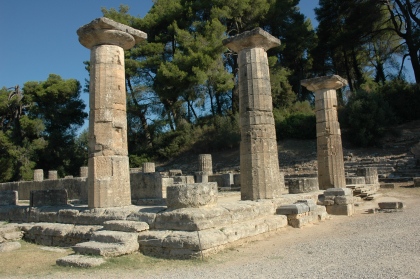
The National Statistics Service warns us that the number of Greek museum visitors and archeological monuments is decreasing for a fourth week. In comparison with the January-September 2007 period, during the same time in 2008 the decrease is with 23% in the museums and with 15.6% to the archeological monuments. If we turn those percentages into number of visitors, the numbers look like this – during 2008, 450 000 less visitors have entered museums, and almost one million less visitors have seen archeological monuments. Obviously, the modernization of the cultural heritage program of the Ministry of Culture did not attract more tourists; rather, it pushed them away.
The visitors of Delphi and Ancient Olympia museums have decreased with 35%; 28.9% decrease in the National Archeological Museum in Athens; 25.5% decrease in the Knights Castle in Rhodes Island. The only visitor increase is registered in the archeological monument of Ancient Olympia and a big part of the visitors admitted that they are coming out of curiosity to see whether the hill is green after it was burnt during the summer of 2007. One small part of those visitors were tempted and entered the Ancient Olympia museum.
It is a tendency in Greece that archeological monuments attract more visitors than the museums. Archeologists explain this with the fact that the monuments are accessible and pleasant to look around because they are outside. The museums need to offer a more modernly ordered expositions, which are using new technologies. They also need to have specialized programs, interesting events, nice restaurants and cafes, nice souvenir stores. The museums in Greece, which can offer such types of services, are not many.
Another reason for the decrease of visitors is the working hours of the museums and the archeological monuments, which close at 02:00 pm during the winter and at 05:00 pm during the summer. The short working hours is due to the lack of guards and administrators.